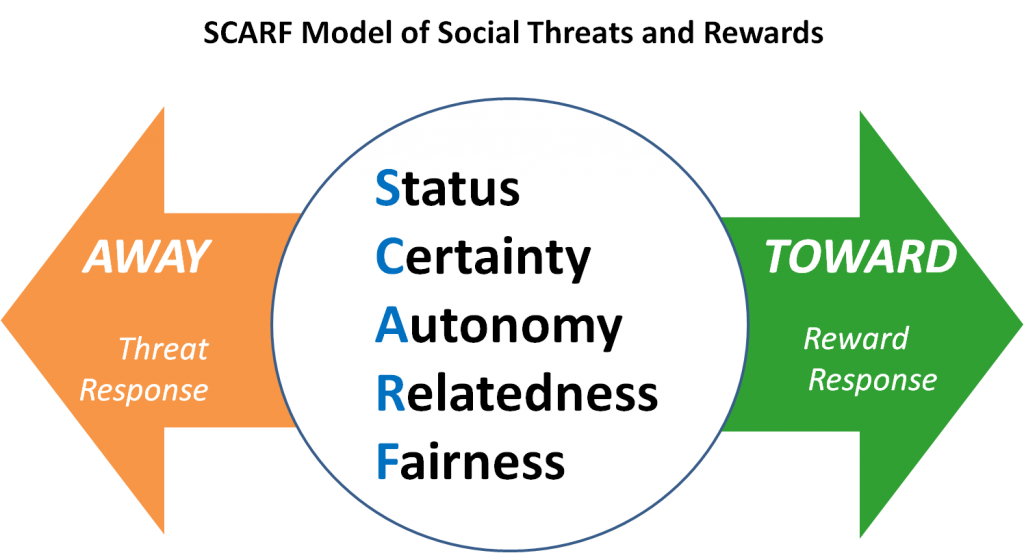
As I’ve explained in previous posts, the brain treats interpersonal rewards and threats as if it was a matter of survival. So knowing about how the brain works can help us recognise when and why our threat response is triggered in social situations. It can also help us figure out how to move more towards a reward state.
And more than this, if you lead or manage people, it can help you to understand why others react in the way they do, and help you empathise, because you appreciate that it’s just the brain doing its job to protect us.
One useful model to help you remember the social situations that trigger the threat and reward response is David Rock’s SCARF model. Rock (2008) identifies 5 domains, which are:
- Status – we feel good when we have higher status, when people look up to us. Conversely if someone puts you down, you feel bad as you have lost status in the group.
- Certainty –the brain wants certainty and we feel threatened when things are uncertain
- Autonomy – we like to be in control and make our own decisions, and we dislike having that taken away
- Relatedness – we like to feel like we belong, and it hurts if we feel excluded
- Fairness – we react strongly if we feel things are unfair, and feel good if we think things are fair
If we look at each of the five domains, it becomes clear just how threatening an organisational change can be, and therefore potentially how stressful or damaging to employees.

Consider a reorganisation or restructuring, for example. If your job is under threat, your status may be threatened. Perhaps you might lose your job, or be demoted. Restructuring introduces uncertainty which can continue for some time. Decisions are made from above, meaning you feel you have no autonomy over what’s happening. Your work group may be broken up, meaning you lose your colleagues and sense of belonging. And perhaps decisions are made that we deem are unfair – why has this person got the job, not me?
But conversely, the SCARF model can be used to help managers make the whole process less stressful and easier for all involved. Consider each domain and how you can reduce the threat and increase the reward. How can you reduce the uncertainty? Give people some autonomy? Ensure that things are fair? Help people connect with each other and improve the sense of belonging?
Whatever the organisation is doing, you as a manager can support your team when going through change, to make the experience less threatening, and more rewarding.
References:
Rock, D. (2008) ‘SCARF: A Brain-Based Model for Collaborating With and Influencing Others‘, Neuroleadership Journal, 1, 1-9.